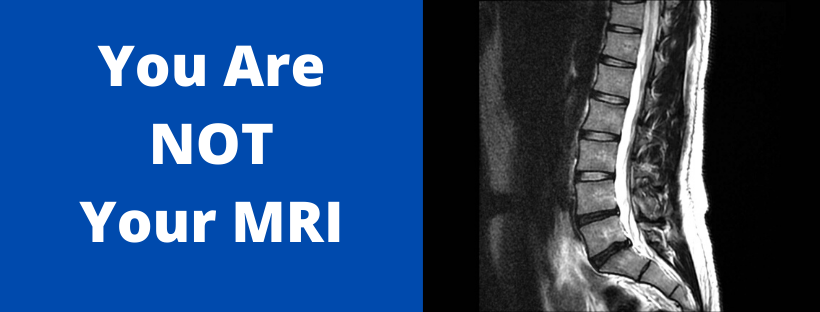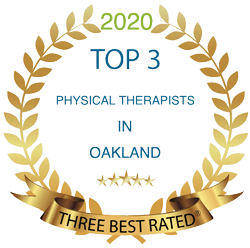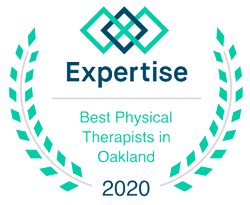Have you ever gotten an MRI to “see what is going on” when you have pain? Or something pops, clicks, snaps? Or you have foot pain?
The use of MRI is continuing to increase, but it is widely OVERUSED to attempt to diagnose musculoskeletal injuries. The MRI does not always give a clear answer to where your pain and symptoms are coming from, so it should not always be the FIRST plan of action.
Let’s take a look at the research:
A recent research study looked at 230 knees of individuals who were asymptomatic – meaning that they did NOT have pain. All of the knees were imaged using MRI to evaluate the structure and identify any abnormal findings. Here are some of the findings (1):
– 30% had meniscus tears
– 57% had cartilage abnormalities
– 48% had bone marrow abnormalities
– 6% had tendonitis
– 3% had ligament ruptures
Now let me remind you…..these people did NOT have symptoms of pain or injury. Almost all of the knees had some sort of abnormality, but no symptoms.
What does this mean?
MOST people, if they went in and got an MRI right now, would find abnormalities not only in their knees, but also other joints in their body. But those findings do not always correlate to PAIN.
Getting an MRI should not be solely relied on to diagnosis musculoskeletal injuries – meaning shoulder pain, knee pain, popping, clicking, back pain, etc.
Let’s take a look at one of the most common problems that the population has: BACK PAIN.
Low back pain affects two-thirds of adults during their lifetime. There is an increasing use of MRI in the evaluation process – but is it useful?
This study looked at 3110 asymptomatic individuals (again, meaning no pain or symptoms in their back) who had imaging done on their back (MRI or CT). Here is what they found (2):
– 37% of 20-year-olds had disc degeneration (meaning the discs in between the vertebra had damage from over time)
– 96% of 80-year-olds had disc degeneration
– 30% of 20-year-olds had a disc bulge
– 84% of 80-year-olds had a disc bulge
– 19% of 20-year-olds had a tear in the tissue that surrounds the disc
– 29% of 80-year-olds had a tear in the tissue that surrounds the disc
A LOT of the findings are related to age and degeneration over time, but they do NOT accurately correlate to PAIN.
There are plenty of people who have back pain, but have pretty normal findings.
And as you can see, there are lots of people who have abnormal MRI findings, but no pain.
The main message: YOU ARE NOT YOUR MRI. The results imaging do not define you or your potential.
There are RED FLAG signs that do warrant the use of imaging – but the majority of musculoskeletal injuries can be handled by FIRST seeking the help of a physical therapist for a full evaluation.
Don’t let the results of imaging define your life – they do not give the whole picture of what you are capable of, even when you age!
So even if you have “bone on bone” showing on your MRI…..it DOES NOT MEAN that you automatically have to live with pain! And just because your back MRI shows a bulging disc it DOES NOT MEAN that THAT is the ultimate reason for your back pain.
This is GOOD NEWS! It means that even though your MRI shows signs of aging, that you still have potential to GET BETTER and to MOVE longer than you were made to believe!
Dr. Logan Lynch, PT, DPT
1. Horga, L. M., Hirschmann, A. C., Henckel, J., Fotiadou, A., Laura, A. D., Torlasco, C., … Hart, A. J. (2020). Prevalence of abnormal findings in 230 knees of asymptomatic adults using 3.0 T MRI. Skeletal Radiology. doi: 10.1007/s00256-020-03394-z
2. Brinjikji, W., Luetmer, P. H., Comstock, B., Bresnahan, B. W., Chen, L. E., Deyo, R. A., Halabi, S., Turner, J. A., Avins, A. L., James, K., Wald, J. T., Kallmes, D. F., & Jarvik, J. G. (2015). Systematic literature review of imaging features of spinal degeneration in asymptomatic populations. AJNR. American journal of neuroradiology, 36(4), 811–816. https://doi.org/10.3174/ajnr.A4173
Medical Disclaimer: All information on this website is intended for instruction and informational purposes only. It should not be used as official medical advice and it does not replace seeking the evaluation of a licensed healthcare professional. The authors are not responsible for any harm or injury that may result if professional medical advice is not utilized. No guarantees of specific results are expressly made or implied on this website.




